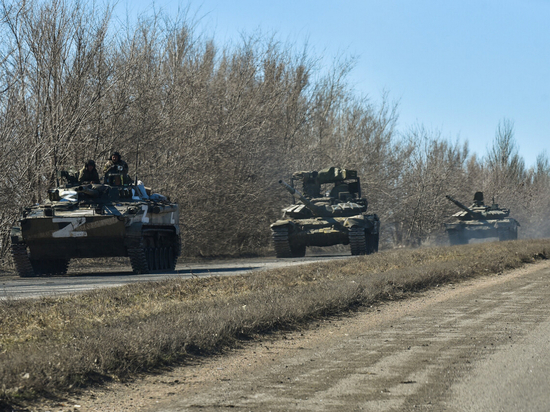“It’s getting harder to attack”
It’s getting colder in the Donbass every day, the rains turn the roads that were recently covered with dust into nasty mud that sticks to your shoes, and you can’t hide under the foliage of trees anymore. The autumn gloom even psychologically presses – the aching longing takes over the soul. But if for us, civilians, all this is autumn lyrics, then for the military, the change of season has more significant consequences. The seasonal factor is increasingly affecting the course of hostilities in the special operation zone.

Photo: Video frame of the Russian Defense Ministry.
A serviceman of the People’s Militia of the LPR with the call sign “Salman” told how weather conditions affect combat activities.
– Weather conditions, of course, greatly affect the actions of the troops. But not all of them. If special-purpose units practically do not care in what weather conditions and ground conditions to perform tasks, then regular forces, especially infantry, are often unable to cope with bad weather.
Especially if the defending side actively uses fortifications, for example, anti-tank ditches, the soil in which gets wet in the first place and becomes practically impassable for people and equipment.
Wheeled vehicles – both passenger cars and trucks, even cross-country vehicles – suffer quite seriously in bad weather. Tracked is less dependent on weather conditions. But if the ground gets thoroughly wet, when, for example, it rains continuously for a day or two, then, of course, any car sits on its belly in the soaked ground.
The possibility of offensive actions, thus, is practically reduced to zero. In principle, the enemy is trying to play on this now, intensifying offensive actions at least in some direction, where possible. We see that the APU is constantly trying to attack us in small groups. Both in the southern direction – in the Kherson, Zaporozhye regions, and on the territory of the LPR and DPR.
– Global manufacturers of unmanned aerial vehicles are already actively producing so-called all-weather drones. That is, those who are able to work in conditions of almost zero visibility can fly in snow and rain. Structurally, the devices are made in such a way that the most important problem, namely the icing of the rotors, practically does not affect them.
Thermal imaging systems are also often all-weather. Their task is to fix the “thermal silhouette”. The weather rarely leads to deviations in the target temperature. Accordingly, the target will be visible both in thermal imaging binoculars and in a thermal imaging sight.
Night vision devices are a little more difficult in this regard, especially with active systems that use infrared illumination for their work, since heavy fog, rain or snow impairs the operation of these devices. Therefore, “night lights” in bad weather, especially at long distances, are ineffective.
– This factor is beneficial for the defending side. And the offensive, on the contrary, is not at all on hand. Because the range of visibility increases dramatically, both with normal observation and with the use of technical means. Therefore, while our troops are in maneuverable defense, it is certainly beneficial to us, but it becomes harder for attacking groups and ambushes to work in such conditions.
“Exactly fifty-fifty. Everything will depend on the degree of adventurism of the enemy – whether he will be ready to throw the remnants of his reserves completely in any of the directions. Kiev really needs some territorial successes, as Western curators demand from them. But the probability of such a scenario, especially when prolonged rains begin, I think, will drop to zero. In this weather , act at leastit becomes almost impossible to use any serious forces. Due to poor visibility and orientation on the terrain, artillery, both barrel and jet, completely loses its effectiveness. One of the principles of aiming artillery batteries is fixed fixed landmarks on the ground, from which the necessary angles of direction are then taken to aim specifically at the target.
But, of course, decisions about the offensive, as we all understand, are made not on the “ground”, but in the highest bodies of military administration. The factor of bad weather can always be used in defense, and thereby effectively hold those lines that are ours today and allow us to repel almost any enemy attempts to occupy new territories.
Lugansk, LNR.

